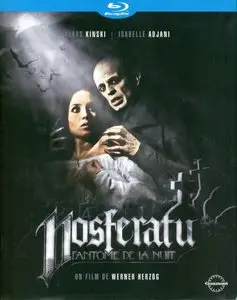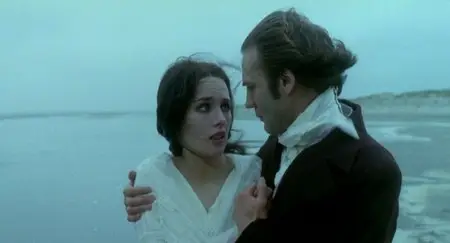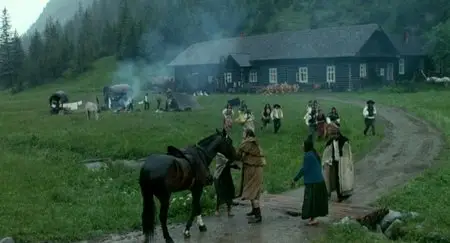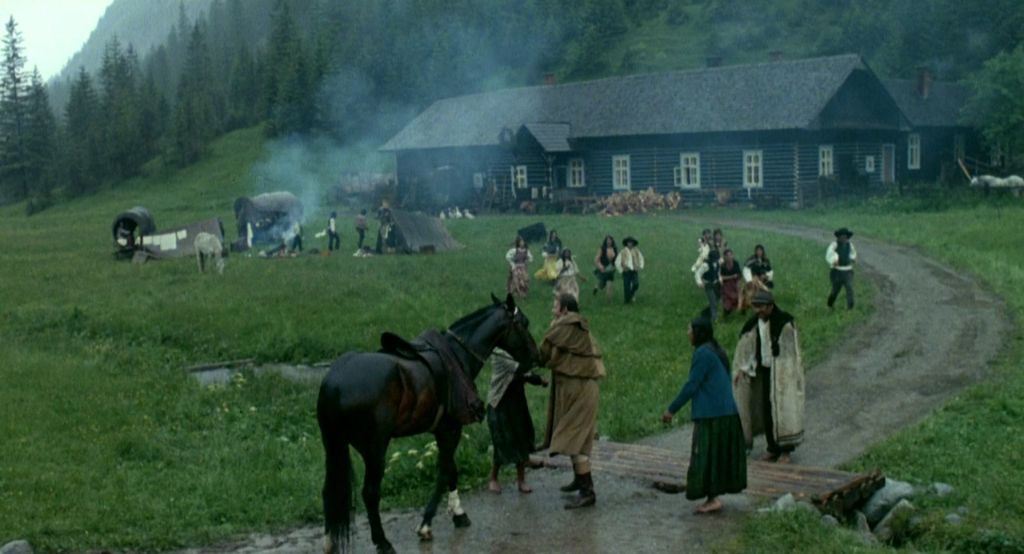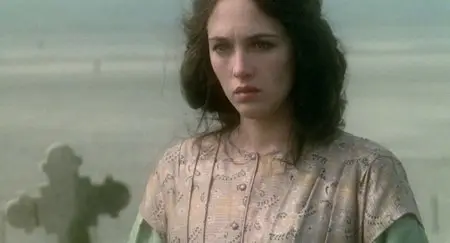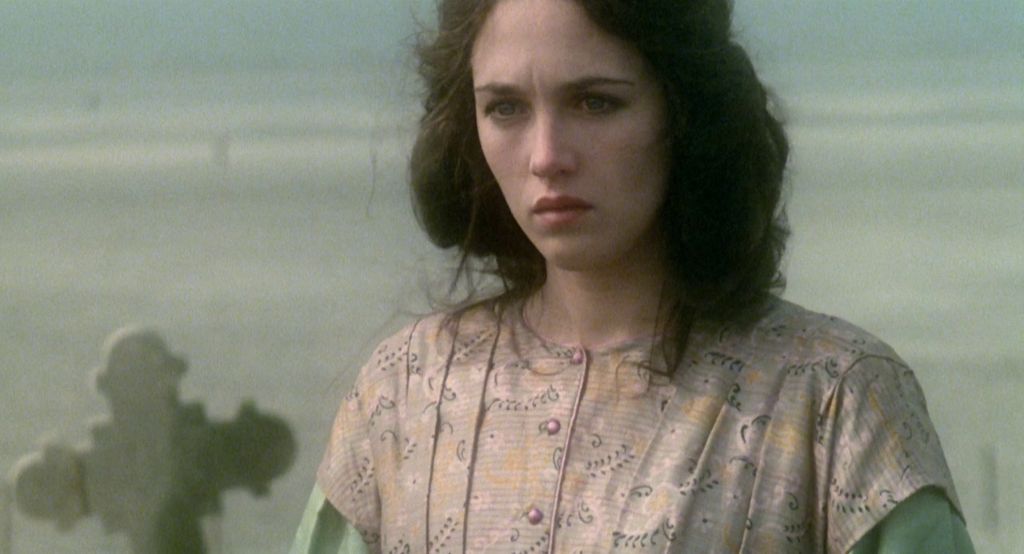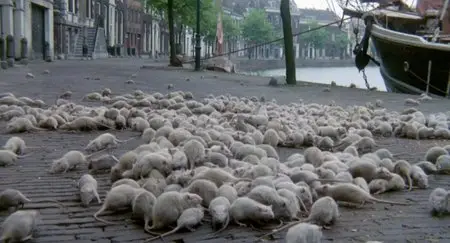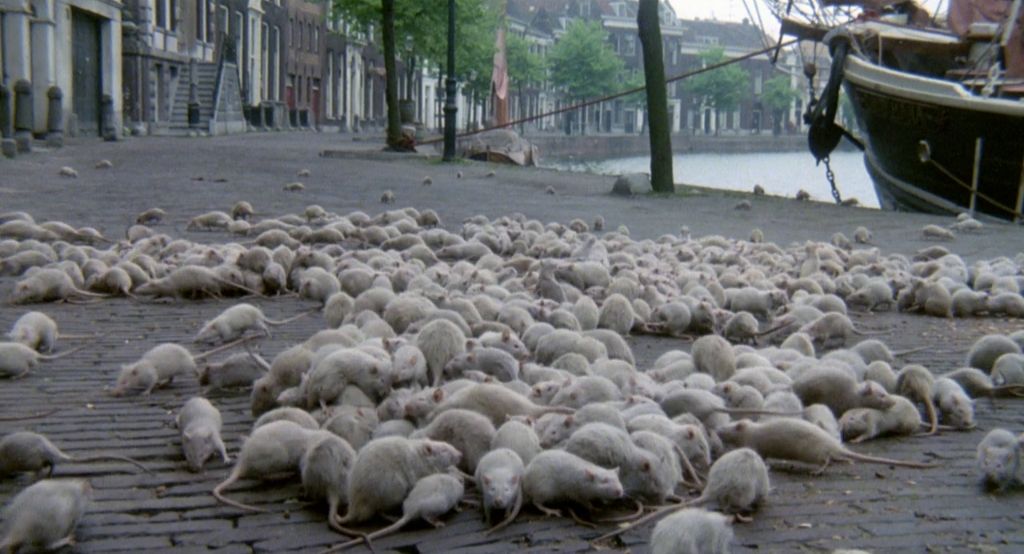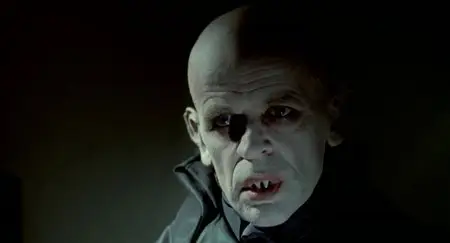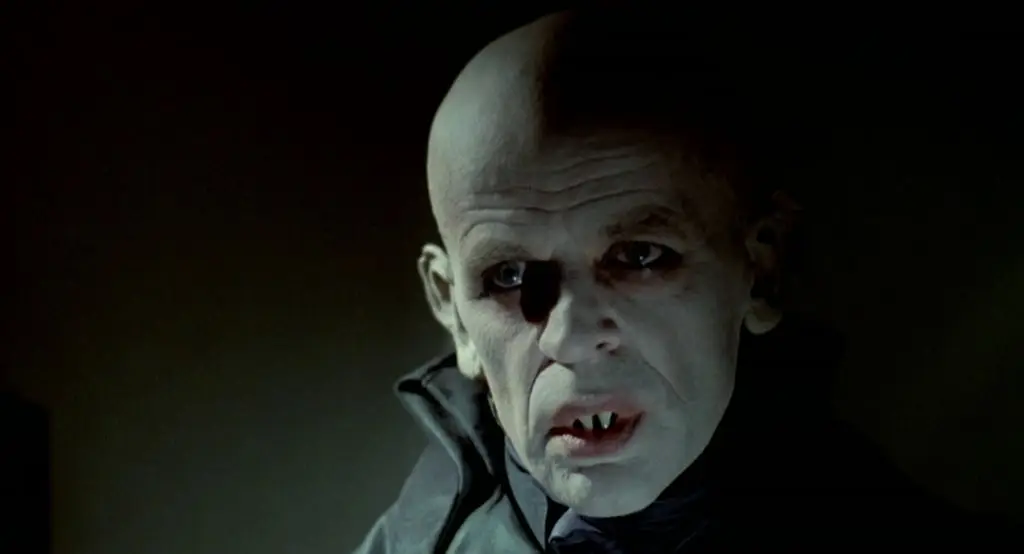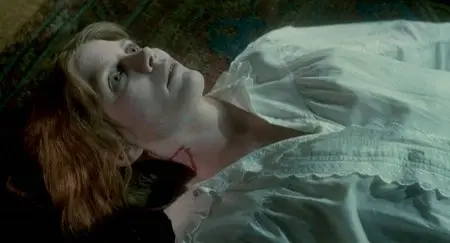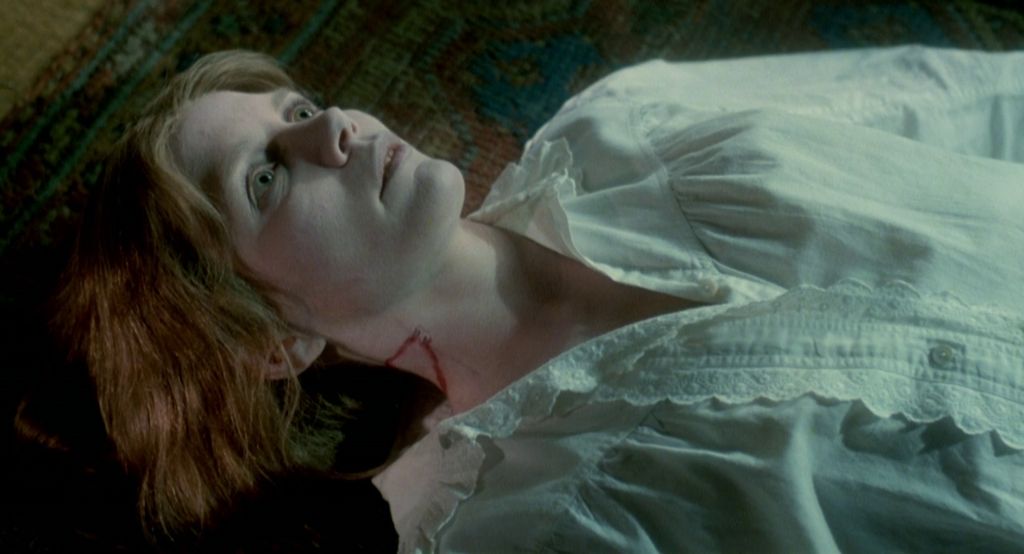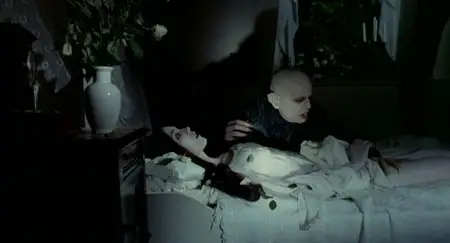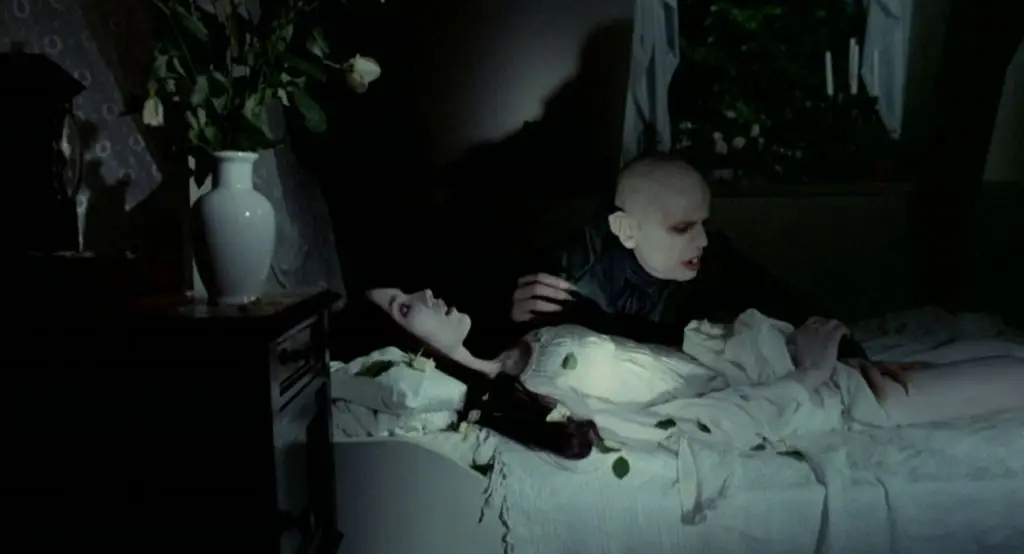Nosferatu: Phantom der Nacht / Nosferatu the Vampyre (1979)
A Film by Werner Herzog
720p BluRay Rip | MKV | 1280 x 692 | x264 @ 5884 Kbps | 01:47:27 | 5,15 Gb
Audio: French DTS 5.1 @ 755 Kbps | Subtitles: English (srt)
Genre: Fantasy, Horror | 4 wins | West Germany, France
A Film by Werner Herzog
720p BluRay Rip | MKV | 1280 x 692 | x264 @ 5884 Kbps | 01:47:27 | 5,15 Gb
Audio: French DTS 5.1 @ 755 Kbps | Subtitles: English (srt)
Genre: Fantasy, Horror | 4 wins | West Germany, France
For Werner Herzog's 1979 remake of F.W. Murnau's classic 1922 silent horror-fest Nosferatu, star Klaus Kinski adopts the same makeup style used by Murnau's leading man Max Schreck. Yet in the Herzog version, the crucial difference is that Nosferatu becomes more and more decayed and desiccated as the film progresses. Essentially a retelling of Bram Stoker's Dracula, Nosferatu the Vampyre traces the blood-sucking progress of the count as he takes over a small German village, then attempts to spread his influence and activities to the rest of the world. All that prevents Dracula from continuing his demonic practices is the self-sacrifice of Lucy Harker, played by Isabelle Adjani. Director Werner Herzog used the story to parallel the rise of Nazism. The film was lensed in the Dutch towns of Delft and Scheiberg.
IMDB
Werner Herzog's take on the Bram Stoker novel Dracula is one of the most stunning of the numerous screen versions of the classic vampire tale. The film is basically a remake of F.W. Murnau's Nosferatu (1922), with notorious Herzog collaborator Klaus Kinski borrowing much in the way of style and character from Max Schreck's performance as the count. Kinski's Nosferatu is a sympathetic vampire, consumed with the sadness of his own plight. In painfully silent scenes, he appears ashamed of his ghoulish appearance and often hides behind his disturbingly long nails. With little to no gore and nothing drastically scary, it doesn't so much seem like a horror movie, yet, thanks to Kinski, it is intensely creepy. Herzog uses stark images, like ancient-looking skulls, and a powerful score from electronic pioneers Popol Vuh to create an eerie nightmare atmosphere. Also adding to the eeriness is the performance of Isabelle Adjani as Lucy, whose ethereal beauty and deadpan delivery produce an unsettling aura for the often underwritten heroine. The additional plot of the plague allows for more surrealist creepiness, such as wandering goats and sheep in the town square. Nosferatu the Vampyre was a characteristic film for Kinski, who excelled in playing other disturbing madmen in many Herzog films, most notably Aguirre, the Wrath of God.Andrea LeVasseur, Rovi
The vampire genre has seen its share of lackluster films. Indeed, the centerpiece of the grand tradition, the Dracula legend, has seen so many remakes and revisionist attempts that one would be hard pressed to find a version of the tale that is original in its telling. Dracula, like it or not, is a cornerstone of Western society. And it is wholly unfortunate that Bela Lugosi is considered THE Dracula (although Hammer fans may contend that Christopher Lee holds the title since he played the good Count over twenty times).
With Werner Herzog's "Nosferatu: Phantom der Nacht" (also known as "Nosferatu: The Vampyre"), the old Hollywood rules seem to have been thrown out the window in favor of F.W. Murnau's striking silent film, the 1922 masterpiece "Nosferatu: Eine Symphonie der Grauens" ("Nosferatu: A Symphony of Terror"). While many purists of the genre balk at the idea of favoring the Nosferatu tale over the time-tested Tod Browning and Terence Fisher entries, one must realize that the cape-clad widow's peak Count has been sullied by a thousand parodies over time, and is simply not a frightening entity any longer. This was a matter much pondered by Francis Ford Coppola when considering his adaptation. While Gary Oldman's portrayal was serviceable and definitely different, something key was lacking from the tale.
This is what Herzog and his long-time "trouble and strife" lead man Klaus Kinski found when they ventured upon the "Nosferatu" remake. Herzog shifted the attention of the viewer away from the plot, which acts mostly as a backdrop for the imagery, and made it so the primary intake becomes a visual one. Kinski's Dracula is not the scowling insect of the Murnau film. He portrays the Count in a way that no other actor has quite grasped. In this film, Dracula is a suffering being, loathing every moment of his curse's continuation. Of course, as the good Count himself states, "Young men. You are like the villagers. and cannot place yourself in the soul of the hunter." The vampyre is trapped by his instincts, and Kinski's eyes betray harrowing madness (as they did in "Aguirre, der Zorn Gottes"), spiteful malice, and a sorrow so bottomless it defies description. It is as if the beast wishes to weep, but has forgotten how.
Filming on location in Germany, Herzog uses the same dreamlike camera angles, mixing them with a rich color palette and masterful lighting. There is a certain uneasiness that filters outward from the screen as you watch. As Jonathan Harker explores his surroundings during his lodging at Castle Dracula, there is inexplicably a young gypsy boy incessantly playing a scratchy violin under the archway. The surreality of the picture is only matched by its attention to the dark magic of the vampire. Like its predecessor, it actually seems to believe in the creatures, and respects them. It holds the legend, the plight of the people of Wismar, and the plight of the Count himself in deep reverence.
What can be extracted from the dialogue and plot is that this is not your average bloodsuckers extravaganza. In fact, the good Count only sets his fangs to the throat of the living once on screen, and when that occurs, it lends more of a feeling of sacrifice and sorrow than of terror. Indeed, the tone of the film is driven toward tragedy, and does not shift its course. One of the film's more telling moments is when Dracula, alone with Harker's beloved Lucy, ventures to plead with the beautiful lady, "Will you come to me. become my ally? Bring salvation to your husband. and to me. The absence of love. is the most abject pain." When she refuses, he does not lash out or decide to make a meal of her then and there. He instead moans with the intonation of a wounded animal and slinks off into the night.
"Nosferatu: Phantom der Nacht" is the most complete of vampire films, and towers over the genre. It could be considered a pity that the only film that sits upon its coattails is its predecessor of the same name. Under Herzog's direction (wisely choosing to avoid remaking classic shots), we get an entirely different film that exudes an entirely different feeling. It not only maintains the eerie horror that the genre deserves, but also achieves a beauty and mystique that has been lost over the years. A must-see.IMDB Reviewer,
86 out of 93 people found this review useful
Download:
http://www.filesonic.com/file/1278628681/Nosferatu.1979.AH.part01.rar
http://www.filesonic.com/file/1278628711/Nosferatu.1979.AH.part02.rar
http://www.filesonic.com/file/1278622331/Nosferatu.1979.AH.part03.rar
http://www.filesonic.com/file/1278621671/Nosferatu.1979.AH.part04.rar
http://www.filesonic.com/file/1278628151/Nosferatu.1979.AH.part05.rar
http://www.filesonic.com/file/1278628301/Nosferatu.1979.AH.part06.rar
http://www.filesonic.com/file/1281715331/Nosferatu.1979.AH.part07.rar
http://www.filesonic.com/file/1278627921/Nosferatu.1979.AH.part08.rar
http://www.filesonic.com/file/1278628391/Nosferatu.1979.AH.part09.rar
http://www.filesonic.com/file/1278628311/Nosferatu.1979.AH.part10.rar
http://www.filesonic.com/file/1278635521/Nosferatu.1979.AH.part11.rar
http://www.wupload.com/file/28870189/Nosferatu.1979.AH.part01.rar
http://www.wupload.com/file/28868414/Nosferatu.1979.AH.part02.rar
http://www.wupload.com/file/28870193/Nosferatu.1979.AH.part03.rar
http://www.wupload.com/file/28868415/Nosferatu.1979.AH.part04.rar
http://www.wupload.com/file/28867231/Nosferatu.1979.AH.part05.rar
http://www.wupload.com/file/28870155/Nosferatu.1979.AH.part06.rar
http://www.wupload.com/file/28868964/Nosferatu.1979.AH.part07.rar
http://www.wupload.com/file/28867538/Nosferatu.1979.AH.part08.rar
http://www.wupload.com/file/28867697/Nosferatu.1979.AH.part09.rar
http://www.wupload.com/file/28870188/Nosferatu.1979.AH.part10.rar
http://www.wupload.com/file/28867300/Nosferatu.1979.AH.part11.rar
http://www.uploadstation.com/file/JzReHTr/Nosferatu.1979.AH.part01.rar
http://www.uploadstation.com/file/9ChBv3d/Nosferatu.1979.AH.part02.rar
http://www.uploadstation.com/file/AAXU6EG/Nosferatu.1979.AH.part03.rar
http://www.uploadstation.com/file/SNQTnyn/Nosferatu.1979.AH.part04.rar
http://www.uploadstation.com/file/8CA6J6M/Nosferatu.1979.AH.part05.rar
http://www.uploadstation.com/file/ra7Q59Z/Nosferatu.1979.AH.part06.rar
http://www.uploadstation.com/file/Qm9Nnvb/Nosferatu.1979.AH.part07.rar
http://www.uploadstation.com/file/9Z7gWDw/Nosferatu.1979.AH.part08.rar
http://www.uploadstation.com/file/FYf4TeM/Nosferatu.1979.AH.part09.rar
http://www.uploadstation.com/file/FBp8n5g/Nosferatu.1979.AH.part10.rar
http://www.uploadstation.com/file/AJwyv8b/Nosferatu.1979.AH.part11.rar
http://www.fileserve.com/file/8F9qeEJ/Nosferatu.1979.AH.part01.rar
http://www.fileserve.com/file/UmCEPTK/Nosferatu.1979.AH.part02.rar
http://www.fileserve.com/file/Qr9JRt3/Nosferatu.1979.AH.part03.rar
http://www.fileserve.com/file/ZydvvJn/Nosferatu.1979.AH.part04.rar
http://www.fileserve.com/file/89tyhMm/Nosferatu.1979.AH.part05.rar
http://www.fileserve.com/file/qseSkqt/Nosferatu.1979.AH.part06.rar
http://www.fileserve.com/file/hbGes3X/Nosferatu.1979.AH.part07.rar
http://www.fileserve.com/file/m9rDJnS/Nosferatu.1979.AH.part08.rar
http://www.fileserve.com/file/xnBmjCF/Nosferatu.1979.AH.part09.rar
http://www.fileserve.com/file/6yRhzXk/Nosferatu.1979.AH.part10.rar
http://www.fileserve.com/file/b4kDr5n/Nosferatu.1979.AH.part11.rar
Interchangable links.
No More Mirrors.


